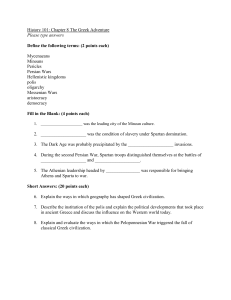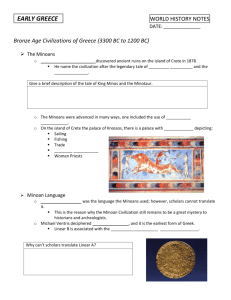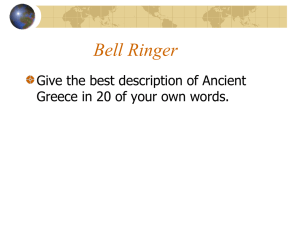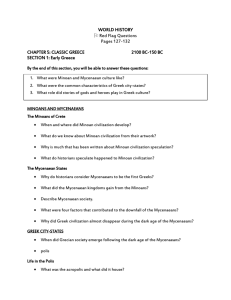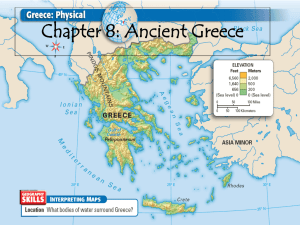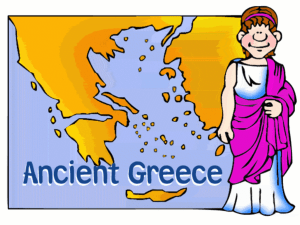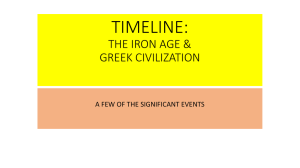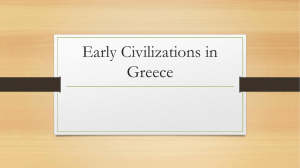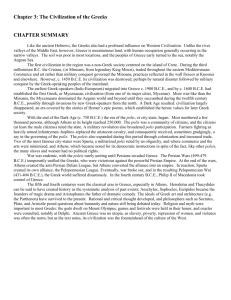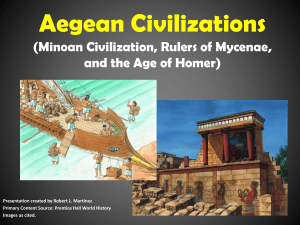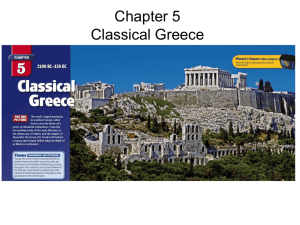Chapter 5, Early Greece
advertisement
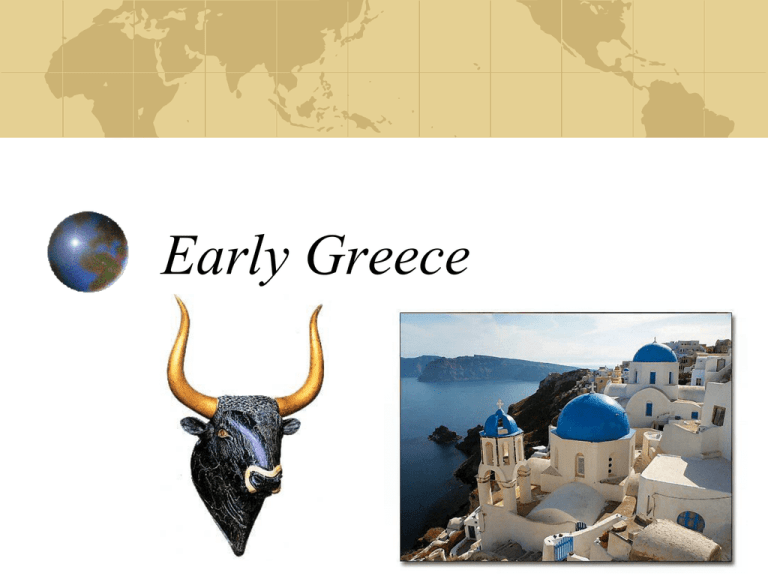
Early Greece Minoan Civilization Sir Arthur Evans discovered ancient ruins on the island of Crete in 1878. He named the civilization after the legendary tale of King Minos and the Minotaur. The Minoans were advanced in many ways, one included the use of indoor plumbing. Minoans Cont. On the island of Crete the palace of Knossos, there is a palace with frescos depicting: Sailing Fishing Trade Bull Jumping Women Priests Minoan Language Linear A was the language the Minoans used; however, scholars cannot translate it. This is the reason why the Minoan Civilization still remains to be a great mystery to historians and archeologists. Michael Ventris deciphered Linear B, and it is the earliest form of Greek. Linear B is associated with the Mycenaean Civilization. A Mysterious Disappearance After 1628 BC, much of the Minoan Civilization is reduced to ruins. On the island of Thera/Santorini, a volcano erupted causing world wide upheaval. According to scientists, the volcano ranked at a VEI-6 or 7. • The destruction at Akrotiri may be the origins of Atlantis. • There also may be a connection to the Biblical Exodus in Egypt. The civilization lingered until about 14001250 BC, until the Mycenaeans conquered what was left of the Minoan civilization. Mycenaeans Civilization “Historians consider the Mycenaeans the first Greeks, because they spoke a form of the Greek language.” While the Mycenaeans copied many aspects of the Minoans they were sharply different. They were more war-like • Trojan War in Homer’s Iliad (Trojan Horse) Powerful Kings dominated city-states Built monuments like the Lion’s Gate Downfall to Dark Ages Many theories exist on why the Mycenaeans failed, but some include: Drought and Famine Invasion by the “Sea Peoples” Collapse of Trade The Greek Dark Ages (1200 – 800 BC) Decrease in population Towns and cities were abandoned Writing and Trade ceased The Emergence of Greek City-States Geography of Greece Greece is mountainous! Greek communities often times developed independently because of the mountains, thus they were diverse As a result, they had their own government, laws, and customs. Greek Polis Around 800 BC, Greece stabilized! Polis- City State • Each polis was unique, and developed separately. Acropolis- a walled “high area” containing fortifications and temples and located in the center of a polis Agora- an open area that served as a meeting place & market in early Greek city-states • Agoraphobia- fear of open spaces. The two major city-states were Athens and Sparta. Athens was the first democracy. Democracy: type of government where people vote. Athens was a direct democracy where people vote on everything. However, only citizens could vote Breakdown of Athenian Social Structure Adult Male Citizens with political rights Women, children with no political rights Non-citizens, slaves, resident foreigners Sparta Sparta was an oligarchy: rule by the few! Sparta was ruled by two kings Helots outnumbered Spartans 7 to 1! This was the main reason for the strict war-like society… • Breakdown of Spartan Social Structure Spartiates Perioeci (Perioikoi) Helots Sparta Sparta was an isolated city-state that was culturally and politically different from Athens. Great military, army feared by other nations. Fighting Machines! During the Peloponnesian War Sparta sacked Athens. Greek Military This is a hoplite, a Greek infantry soldier. Hoplites were middle class freemen who had to pay for their own weapon and shield. Greek Military: Phalanx Soldiers get in a tight box. They each have a large shield and a 9 foot long spear. Was used in the Battle of Marathon in 490 BC. The Athenians defeated the Persians with this tactic. Greeks were Polytheistic!
